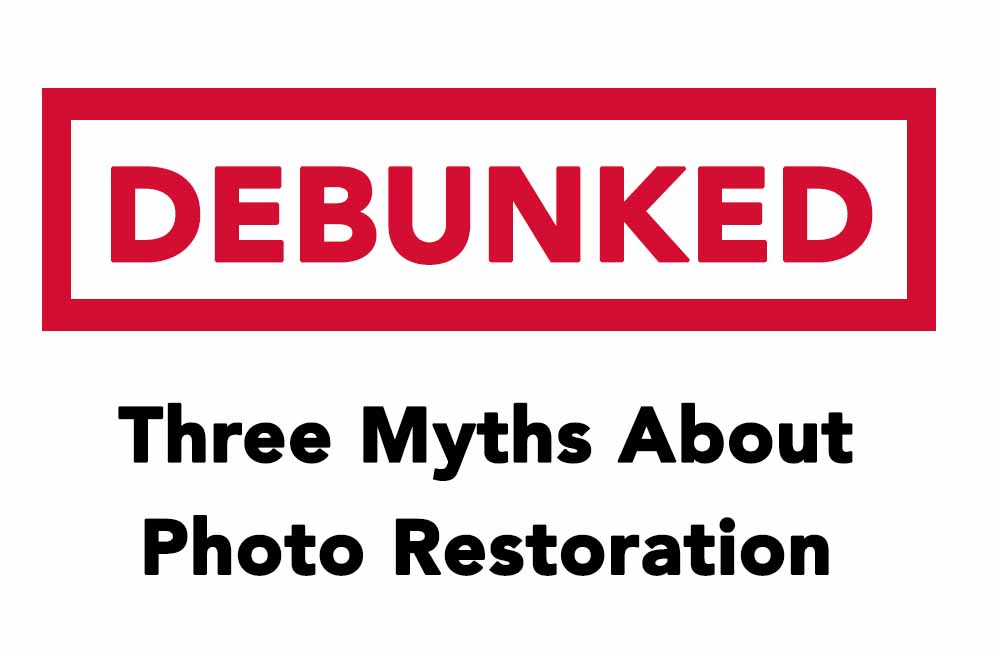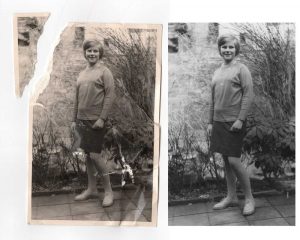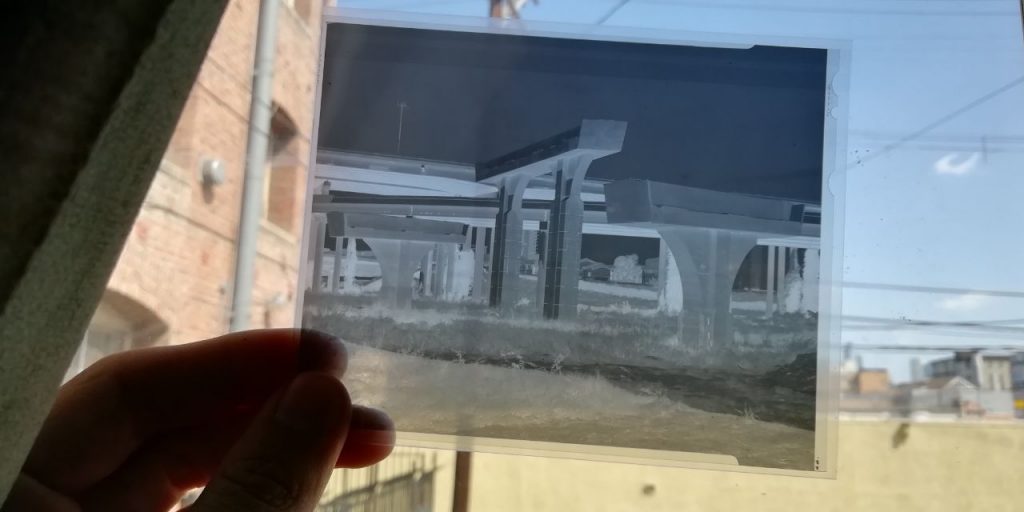
Debunked - 3 Myths about Photo Restoration
The Top Three Myths

Although the techniques of photo restoration have been around for quite a while we at InstaRestoration.com get regularly confronted with misconceptions of what photo restoration actually is and what it can do to save your family photos. Whereas, some people tend to overestimate the power of photo restoration others tend to underestimate and even diminish it. In this article, we would like to set the record straight and talk about what photo restoration really can do for you and whatnot. We will talk about the priceless value of experience, the most recent technological shifts and how real art can help you save your family history forever.
1. A.I. will solve it?
Believe it or not, we regularly receive emails of people that tell us that our service is outdated and our prices not adequate. By far the most common argument we hear for that is that A.I. can easily do our job. Is that true? Let’s get into that argument and see what it really is about.
The modern world seems to be obsessed with the idea that computers in the form of A.I. (artificial intelligence) and robots sooner or later will be able to perform every thinkable task. From breaking the most severe encryption methods to driving us safely around the city to making us all lose our jobs. For some people, especially the ones in Silicon Valley, this sounds like a promising future where mankind is freed from work and finally is able to solely concentrate on what he is made for. For the more dystopian people out there it is the beginning of slavery by machines.
We at InstaRestoration have been dealing with the idea of A.I. rendering our profession obsolete for way longer than you might imagine.
Photo Restoration itself thereby falls into a much bigger category that can be described as image recognition technologies. These can be dated back to the early 80s and late 70s. Some of it has already found their way into our daily lives. Such as the face recognition of your iPhone. It is certain to say that these technologies will become more and more important in our lives. Just imagine what a key role these technologies play for self-driving cars and all fully automated moving systems like robots or drones.
But what does all that mean for photo restoration? Shouldn’t such powerful A.I. already be capable of restoring photos? Well, the answer is a little bit more complicated than it first seems to be. There are a couple of reasons why there is no photo restoration A.I. available that can fully and reliably restore images. The most important reason for that is, that recognizing an object is not the same as recreating an object. Whereas, self-driving cars “only” have to be able to understand in what environment they are moving around photo restoration is even more complicated. It is certainly not enough to understand that an image is showing two people and one of them is missing some parts of their left hand. First and foremost the hand has to be reconstructed. This means the software has to understand the angle, perspective, and posture of that person.
Computationally speaking this is the “easiest” part of the restoration. It certainly becomes way more difficult when artistic, cultural, and historical knowledge is needed to reconstruct the image. A human brain can very easily understand the circumstances the photograph was taken. Is it a wedding photo, a burial or just a snapshot. What time was it taken in? And what is the artistic purpose of doing so? A machine needs billions of data points to be fully able to understand what is actually looking at. Software, therefore, has to be individually trained for the exact purpose it’s going to be used for. Currently, billions of billions are being poured into the development of self-driving cars. Same amounts would have to be spent on photo restoration A.I. to be able to get close to the results that humans can perform within split seconds.
We are not saying it is technically not possible to do so but at the moment it’s just economically not making any sense. Nevertheless, we are certain that a time will come where A.I. will be as good or better than humans. We at InstaRestoration have always been at the forefront of this development.
Nvidia Inpainting: The future
Just take a look at the most recent development of Nvidias Inpainting deep learning A.I.
On the left side, you see the original image. Slowly parts of the image get covered. On the right side, you see the realtime editing process of Nvidia’s A.I.
Humans are still necessary
The results are absolutely stunning but the program is still in a research phase. We have been able to try it and although it seems to be very promising it is not yet meeting our criteria of accuracy. Also, the handling is everything but consumer-friendly. You have to be a developer to be able to operate the system.
If you carefully watch the video you will see that the program is lacking exactly what we were referring to in the upper space. This becomes especially obvious on the woman’s face. The deep-learning A.I. is simply applying a “face” to it and not the actual face of the woman. Up until now, only a human can understand this complexity.
So let’s state the facts. A.I. will eventually come and take over the world. In the future, It might and probably will make photo restoration obsolete but at the moment there is just no software available that can perform such outstanding results as a human. We at InstaRestoration will certainly be one of the first to implement this new era of photo restoration software as soon it is reliable and accurate enough. We’ll keep you posted about the future of photo restoration.
2. Any photo can be repaired
Funnily, other people are a little bit too confident of what photo restoration can do. We certainly are better than machines but we’re not magicians.
Sometimes we receive heavily destroyed images which even we can’t restore anymore. For non-professionals, it can be hard to understand why some photos can and why some photos can’t be restored. In this section, we would like to introduce you to our workflow and thereby get you a better understanding of what is possible and what not.
First of all, it is important to understand how photo restoration is actually working. Although our profession comes very close to art it is not actually art. We only use information that is already there. Which means we are not actively creating something. As our profession’s name already implies we are restoring information. Sometimes photographs are so heavily damaged by fire, water or other circumstances that there is simply no information left to be restored. In such cases, there is only one way to “restore” the information. We have to retrieve the information from other photographs. We at InstaRestoration have a huge database of faces, clothes, objects, and landscapes we can search for the missing information. This works quite okay for non-personal, generic damages but as soon as an individual face is damaged things become a lot more tricky. Certainly, we can’t just use whatever face we find in our database and put it onto your grandma’s portrait. Otherwise, it wouldn’t be your Grandma anymore.
In all these cases the only we can proceed with restoring your photo is by collecting additional photographs of that very person. We then have the chance to be able to reconstruct the face with the information provided in the other photographs. This means whenever you are trying to restore a heavily damaged photograph you’re chances become a lot better if you have more than one photo of that person.
You might ask yourself now “Why can’t you just paint the missing facial features?” Well, this is a little bit more complicated than it actually sounds. Of course, software like Adobe Photoshop or others offer a digitally painting feature but this does not only require years of painting experience but also it ultimately turns your photograph into a painting. It is almost impossible to keep up the original look of your photograph by using digital printing methods. Grain, tone, and expression will ultimately be altered which eventually alters the photograph in total.
We are very aware of the fact that some people don’t really care about whether they receive a painting or a photograph as long as they can finally see their loved ones again. Nevertheless, for us a professional photo restoration service we don’t perform these kinds of services.
At least up until now. We are currently setting up a pilot to work with talented painters which help us to reconstruct those lost photographs. Our talented painters will not only create digital paintings of your severely damaged photos but are also able to directly paint them with real oil paint.
Imagine this – A life-size, handpainted portrait of your forefathers on the wall of your living room. Simply by sending us a damaged photograph of one of your family members.
3. Resolution can easily be improved
Another common misconception is that photo restoration can increase the resolution and thereby the quality of your photograph.
To fully understand how the resolution is related to photographic quality we have to dig a little deeper. We have to understand the photographic process itself before we are able to see what the actual problem is.
A lot of people think the resolution of their scanner determines the quality of their digitized photograph. Whereas this is partially true there is a physical limit to that. Increasing the resolution is not automatically increasing the quality of your scan.
Quality improves tremendously for resolutions between 72dpi -600 dpi but in most cases won’t help when scanning above 600dpi.
Why is that?
Scanner? DPI? Resolution?
If you don’t know what we’re talking about here. Just take a quick look at our tutorial on “How to scan your old photographs”
As mentioned above the answer lies within the photographic process itself. Today’s photos are almost all taken with a digital camera. The digital file created on your sd card is the actual photo. It doesn’t matter if you copy it from your camera onto your hard disk send it to a friend via email or store it in your cloud-based back-up.
But as you know we are not dealing with digital images. Restoring photos is all about restoring old analog photographs. Sure we use digital tools and software but we are working on real unique photographs.
The negative is the real original
Really do we? Let’s think about it for a moment. Back in the day when people still used negative film to take photos, we didn’t have the photo right away, did we? It actually took quite a while until you were able to physically hold your holiday photos in your hands. First and foremost you had to take 36 photos until all the frames on your film were exposed. Then you took your exposed film to the lab. They developed the negatives and created small prints of the photographs. You then looked at them and decided which ones you like to get printed in large which ones twice and which ones not at all.
Important was that you had to return the negatives for that. But why? Well, the new prints were not created by reproducing or enlarging the old prints but by using the original negatives.

The negative is the real original. This is the chemical process that directly corresponds to the physical world. All prints made of these negatives are simple copies of that original. Copies that are made for a specific size and purpose.
And this exactly is why it is only possible to enlarge photographic prints to a certain extent. The copy does not carry all the information that is being stored in the original negative. The print is produced for that size and that size only. No one anticipated people scanning these prints and trying to enlarge them. They are produced for the human eye and not for high-resolution scanners.
Scanning your photographic print with 300 dpi equals an exact reproduction of that print. With 600 dpi you can print your photograph double the size. Nevertheless, be aware this doesn’t mean that there is any more information in your photograph. This is exactly the reason why it doesn’t make sense to use higher resolutions than 600dpi for normal photographic prints. Of course, you can scan your old photo with 1200dpi or even 2400 dpi. But there is simply no information that can be scanned.
This is certainly not the case for negatives. Not only is the negative the original but also is it intended to be enlarged. The negative’s grain can record way more detail than the print’s grain can. Here it makes sense to use high resolutions and high res scanners. The same is true for slides.
Hence it is always better to scan the original negative than the printed photograph.
Read more about how to properly clean your photographic material for the best scan results here.
But what does this all have to do with photo restoration?
As I’ve described above in the previous section, photo restoration artists are working with the information that is hidden but somehow still there. This means we can, of course, recover information that is being bleached away has shifted in color or can be somehow constructed from other information left in the damaged photograph. What we can’t do is add information we don’t have. This means the resolution of your photograph is determined by its original physical size. And this resolution determines how and what we can do with your photo. In most cases, it is simply physically not possible to enlarge the photograph by more than two times.
Of course, A.I. is also being trained to work on this issue and there are some promising results. But the problem exists as much for computers as for humans. Information that is not there can not be enlarged.
If you have any photo you like to get enlarged multiple times we can still help. We are currently setting up a pilot service for creating a real painting from your photograph. In close correspondence with our professional painters, you will be able to create a unique and real painting of your photograph. No matter if the image is damaged, tiny or totally fine.